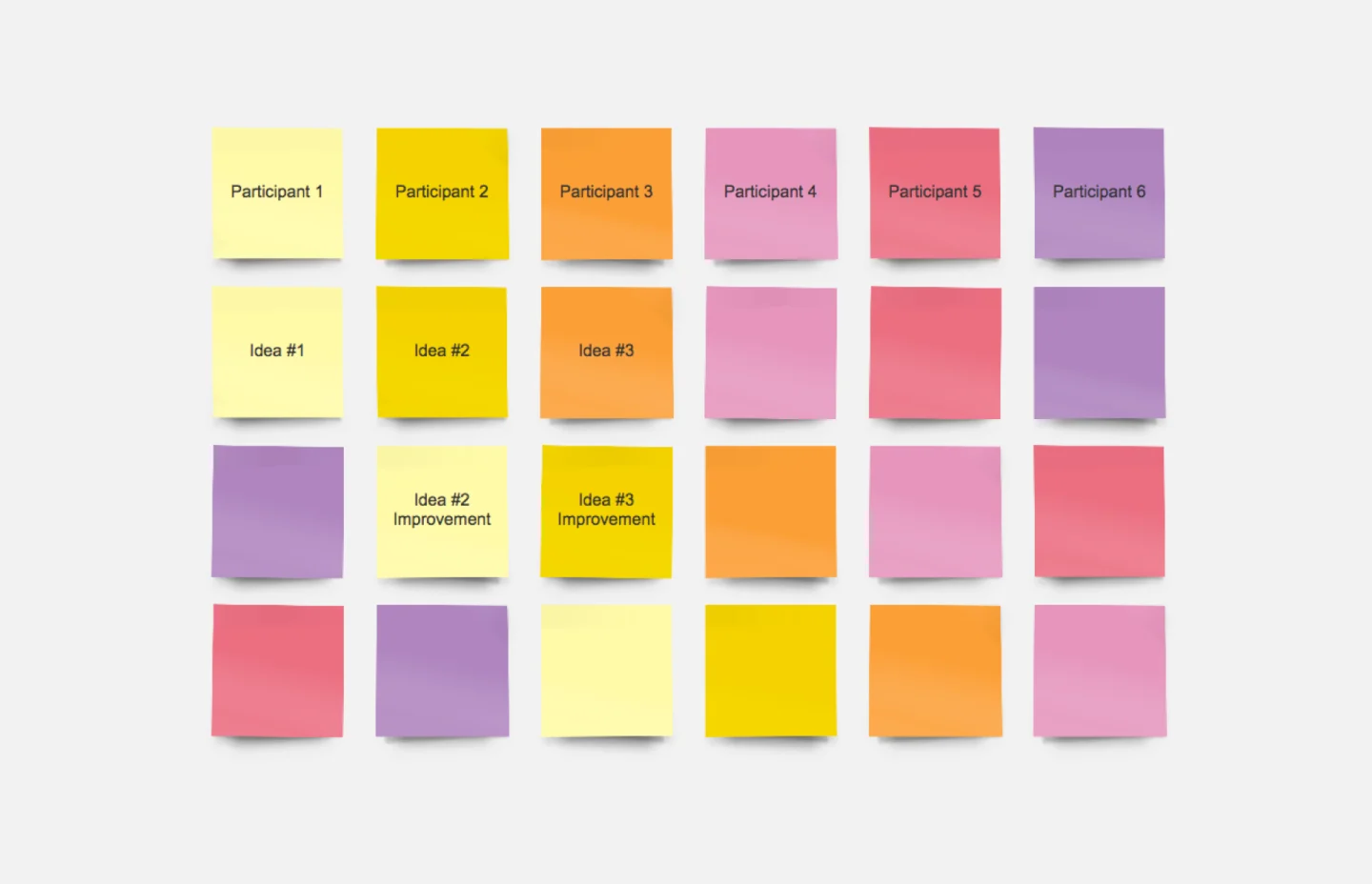
Table of contents
Table of contents
What is brainwriting?

What is brainwriting: A quick guide to boost creative collaboration
When you want to generate ideas, there are many engaging tools and techniques, and brainwriting is one of the most effective. As a working professional in any field, it's worth exploring creative methodologies, especially if you want to innovate. This article is for everyone curious about this innovative technique, whether you're a seasoned manager or an enthusiastic beginner.
Understanding the concept of brainwriting
So, what is brainwriting? At its core, brainwriting is a group creativity technique. It's similar to brainstorming but with a twist: instead of verbally sharing ideas, participants write them down. This subtle shift causes a significant impact—it promotes democratic participation, reduces cognitive biases, and often results in a more substantial number and diversity of ideas.
Compared to traditional brainstorming, where the loudest voices often dominate, brainwriting ensures that everyone's input gets equal consideration. It alleviates pressure, encourages quieter members to contribute, and allows ideas to build upon each other organically.
Origins of brainwriting
Brainwriting emerged as a progressive alternative to brainstorming in the late 1960s. Since then, it has evolved into various versions and is recognized across industries, from technology to education, for its efficacy in group ideation.
The brainwriting process
The magic of brainwriting lies in its simplicity. Here's the step-by-step process:
Define the problem: Start with a clear and concise problem statement. This serves as the focus for idea generation.
Generate ideas: Each participant writes down ideas individually, allowing for an independent thought process.
Share ideas: Participants pass their ideas to the next person or post them on a shared board, depending on the chosen method.
Build upon ideas: Each person reads and expands on the ideas they've received, triggering a chain of collective creativity.
Discuss and refine: The group comes together to discuss, evaluate, and refine the ideas.
Remember, there are no bad ideas in the initial stages, and the key to effective brainwriting is creating an open and non-judgmental environment.
Variations of brainwriting
Brainwriting is flexible and adapts to various contexts. The 6-3-5 method is a popular variation, named for its format: 6 participants, 3 ideas each, in 5 minutes. The papers are then circulated, and the process repeats, resulting in many refined ideas. Each variant of brainwriting has unique strengths, so feel free to experiment and discover which works best for your team, and try out Miro's Brainwriting Template.
The benefits of brainwriting
Brainwriting, with its democratic and collaborative nature, can significantly boost creativity and idea generation. It cultivates a safe space for innovation and nurtures intellectual diversity.
Google's '20% time' policy is a classic example of brainwriting's efficacy. Encouraging employees to spend 20% of their time on side projects has led to successful innovations like Gmail and Google News.
Common misconceptions and challenges of brainwriting
Despite its benefits, brainwriting has its share of misconceptions. It's not a silver bullet for all creative challenges and doesn't guarantee instant innovation. It's also important to remember that it's a structured technique and requires practice and commitment from all participants. Challenges might include participants misunderstanding the problem statement or being reluctant to share ideas. A clear explanation of the process and a supportive environment are vital in overcoming these hurdles.
Conclusion
So, what is brainwriting? It's a powerful, collaborative technique that fosters innovation and ensures every voice is heard. By embracing brainwriting, your team can unlock untapped creative potential and devise unique solutions. Whether you're part of a small startup or a global corporation, I encourage you to give brainwriting a shot. Remember, the next big idea might just be a brainwriting session away!
References
For more details and case studies on brainwriting, you can refer to these resources:
"Brainwriting for New Product Ideas: An Alternative to Brainstorming" by Paul Paulus.
"Innovation Step-by-Step: How to Create & Develop Ideas for your Challenge" by Darin Eich.
"Tools for Innovation" by Arthur B. Markman and Kristin L. Wood.